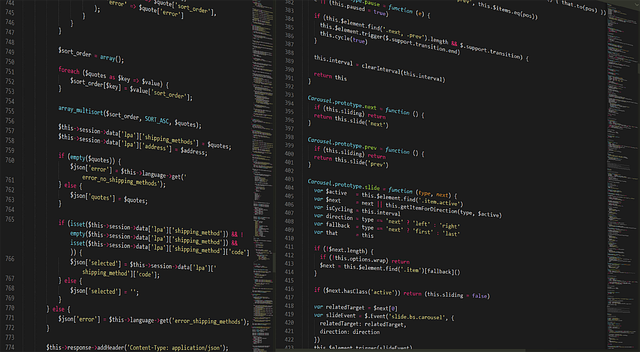Guide to AI Agents
AI agents represent a fundamental shift in how artificial intelligence systems operate and interact with their environments. These autonomous programs can perceive, reason, and act independently to achieve specific goals, making them essential components of modern AI applications. From simple reactive systems to complex learning algorithms, AI agents are transforming industries and reshaping our understanding of intelligent automation.

What is Agent Based AI
Agent based AI refers to artificial intelligence systems designed as autonomous entities that can perceive their environment, make decisions, and take actions to achieve specific objectives. Unlike traditional software programs that follow predetermined instructions, AI agents operate with varying degrees of independence and can adapt their behaviour based on changing circumstances. These systems form the backbone of many modern AI applications, from chatbots and recommendation engines to autonomous vehicles and smart home devices.
The concept of agent based AI draws from multiple disciplines, including computer science, cognitive psychology, and philosophy of mind. At its core, an AI agent must possess the ability to sense its environment through various inputs, process this information using internal logic or learned patterns, and execute appropriate responses. This cycle of perception, reasoning, and action enables AI agents to function effectively in dynamic and unpredictable scenarios.
Types of AI Agents with Examples
AI agents can be categorised into several distinct types based on their complexity, learning capabilities, and operational characteristics. Simple reflex agents represent the most basic form, responding directly to current perceptions without considering historical data. A thermostat exemplifies this category, automatically adjusting temperature based solely on current readings without learning from past patterns.
Model-based reflex agents maintain an internal representation of their world, allowing them to handle partially observable environments more effectively. Robotic vacuum cleaners demonstrate this approach by mapping room layouts and remembering obstacle locations to navigate efficiently during subsequent cleaning cycles.
Goal-based agents operate with specific objectives in mind, planning sequences of actions to achieve desired outcomes. Navigation systems in smartphones illustrate this category, calculating optimal routes by considering traffic conditions, distance, and user preferences to reach specified destinations.
Utility-based agents extend goal-based functionality by evaluating multiple objectives and making trade-offs between competing priorities. Online recommendation systems exemplify this approach, balancing factors such as user preferences, item popularity, and business objectives to suggest relevant content or products.
Understanding An AI Agent Architecture
The architecture of an AI agent typically comprises several interconnected components that work together to enable intelligent behaviour. The perception system serves as the agent’s sensory interface, collecting and processing information from the environment through various input mechanisms such as cameras, microphones, sensors, or data feeds.
The knowledge base stores information about the world, including facts, rules, and learned patterns that inform decision-making processes. This component may include both static knowledge programmed during development and dynamic information acquired through experience and learning.
The reasoning engine processes incoming perceptions against stored knowledge to determine appropriate actions. This component may employ various techniques, from simple rule-based logic to sophisticated machine learning algorithms, depending on the agent’s complexity and intended applications.
The action selection mechanism translates decisions into concrete outputs, whether physical movements, digital communications, or system modifications. This component ensures that the agent’s internal reasoning translates into meaningful interactions with its environment.
| Agent Type | Example Application | Key Characteristics | Implementation Complexity |
|---|---|---|---|
| Simple Reflex | Smart Light Switch | Direct stimulus-response | Low |
| Model-Based | Autonomous Drone | Environmental mapping | Medium |
| Goal-Based | Chess AI | Strategic planning | High |
| Utility-Based | Trading Algorithm | Multi-objective optimisation | Very High |
| Learning Agent | Personal Assistant | Adaptive behaviour | Very High |
Learning and Adaptation in AI Agents
Modern AI agents increasingly incorporate learning capabilities that enable them to improve performance over time through experience. Machine learning techniques such as reinforcement learning allow agents to discover optimal strategies through trial and error, gradually refining their decision-making processes based on feedback from their actions.
Supervised learning enables agents to recognise patterns and make predictions based on training data, while unsupervised learning helps them discover hidden structures and relationships within their operational environment. These learning mechanisms transform static agents into dynamic systems capable of adapting to new situations and evolving requirements.
The integration of learning capabilities raises important considerations regarding agent behaviour and reliability. As agents modify their internal models and decision-making processes, ensuring consistent and predictable performance becomes increasingly challenging, requiring careful monitoring and validation mechanisms.
Applications and Future Developments
AI agents are finding applications across numerous domains, from customer service chatbots and virtual assistants to autonomous vehicles and industrial automation systems. In healthcare, diagnostic agents assist medical professionals by analysing patient data and suggesting potential treatments. Financial services employ trading agents to execute investment strategies and detect fraudulent transactions.
The future of AI agents points toward increased sophistication and integration across multiple systems. Multi-agent systems, where numerous AI agents collaborate and compete within shared environments, promise to enable more complex problem-solving capabilities and distributed intelligence networks.
Emerging developments in natural language processing, computer vision, and decision-making algorithms continue to expand the capabilities and applications of AI agents. As these technologies mature, we can expect to see more autonomous and capable agents operating in increasingly complex and dynamic environments, fundamentally changing how we interact with and benefit from artificial intelligence systems.




